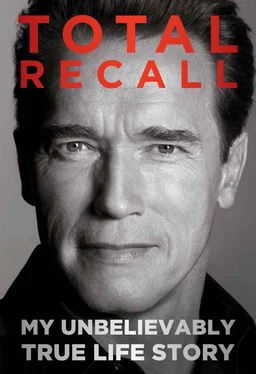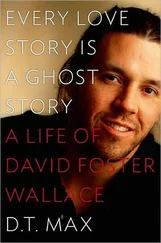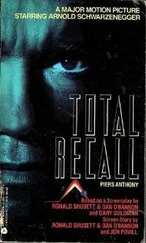As always, the biggest challenge was winning the cooperation of the Democratic majority in the statehouse. We did that by taking on the issues that Democrats couldn’t oppose, such as infrastructure investment and the environment. The approach gave them a bitingly clear choice: they could fight me and be seen as obstructionist while I tried to move the state forward. Or they could work with me and make progress on issues dear to the hearts of their constituents. They realized that having a Republican governor lead on big issues was a “Nixon goes to China” moment they couldn’t afford to pass up.
After months of hard negotiations, the Democrats chose the path of cooperation. In May we achieved the two-thirds majority required to put through the bond package. My $68 billion proposal had gotten reworked and resized and came out as $42 billion. It took us two more years to negotiate funding for the prison and water proposals, but we got it all eventually. By far, this was the most ambitious infrastructure package of its kind in California history. The press called it “historic.” Now the package would have to go before the voters for approval in November, but its passage in the legislature alone—the fact that California had gotten its act together on a major issue confronting every state—made national news.
I knew exactly how to sell something that sounds as boring as “infrastructure” to the voters. We presented it on the personal level. We didn’t just harp on infrastructure and bond amounts. Instead, I talked to voters up and down the state about how angry they were at always being stuck in traffic, about how they were missing their kids’ soccer games or dinner with the family. I talked to them about how frustrated they were with the crowded and temporary classrooms where many of their kids went to school.
After Hurricane Katrina in 2005, it was easier for me to make people aware of how vulnerable California’s old levees were. In prehistoric times, the whole middle part of the state had been a vast inland sea, and now it was a little like Holland. Except for the levees and flood control, the waters could come back and turn us into the Louisiana of the West Coast. One bad earthquake could destroy the system and flood the interior valley, wiping out the source of drinking water for tens of millions of people in the southern part of the state.
I also had big plans to complete the state’s plumbing: a canal to ensure the flow of water from the North, where it is abundant, to the South, where it is not. In the early 1960s, Governor Pat Brown, Jerry’s father, had begun the project with ambitions to make the system so monumental that water would never be fought over again. But Ronald Reagan had put a stop to the construction when he came into office in 1967, and the issue continued to cause battles between Californians, as it had through most of their history.
To sell the package to voters, I invited legislative leaders of both parties to travel with me around the state. It was the weirdest thing: Democrats and Republicans had done something together! The fact that Democratic legislators were campaigning with a Republican governor who was running for reelection made it all the more stunning to see us together on the trail. And it drove my Democratic opponent, Phil Angelides, crazy. But the legislators were able to declare victory, and they saw how positively the people responded. They were so used to hearing “Your poll numbers are in the toilet, no one likes you, you’re wasting money, you’re a self-serving bastard, you’re in cahoots with labor, you’re in cahoots with business …” Now all of a sudden they felt like winners. They’d passed these bonds, and the public was saying, “Wow that is really great, Republicans and Democrats working together—finally!”
So the logjam broke. The momentum from the bond package propelled us into a very productive year. That summer, we passed a $128 billion budget for 2006–07 that included a big increase in funding for schools plus $2 billion in debt repayment. We did so without the perennial delays and fights, making it the first on-time budget in years. After some wrangling, we negotiated a long-overdue increase in the minimum wage. My Million Solar Roofs Initiative became law in September, creating $2.9 billion of incentives for Californians to equip houses with solar power. The idea was to stimulate innovation, create jobs, and get 3,000 megawatts of solar up and running in ten years—enough to replace six coal-fired power plants.
In 2006 we took our boldest policy leap: landmark legislation on climate change, one of the most divisive issues in modern American politics. The California Global Warming Solutions Act committed California to cap and then drastically reduce carbon emissions in the next fifteen years: 30 percent by 2020, and 80 percent by 2050. It was the first such legislation in the nation, and political and environmental leaders predicted it would have ramifications worldwide. British prime minister Tony Blair, who’d helped sell the Democrats on cap and trade, attended the signing ceremony via satellite hookup. He was from the Labor Party, and he convinced Fabian and other Democrats that cap and trade was okay. We received a formal commendation from Japan.
For California to meet such aggressive goals, we would have to attack greenhouse gases from every angle. The law would affect not only dozens of industries but also our cars, homes, freeways, cities, and farms. As the San Francisco Chronicle pointed out, it could lead to more public transportation, more densely built housing, the planting of a million new trees, and major investments in alternative energy.
The global warming act was news not only because California was America’s second-biggest emitter of greenhouse gases after Texas but also because we were taking such a radically different course than the Congress and President Bush. California and Washington, DC, had been at odds over climate change well before I came to Sacramento. Gray Davis had signed a law requiring automakers who wanted to sell cars in California to reduce passenger car emissions by nearly a third by 2016, and boost average fuel efficiency from twenty-seven miles per gallon to thirty-five miles per gallon. Passenger car emissions accounted for 40 percent of the greenhouse gases in our state. But the Environmental Protection Agency under President Bush blocked us from enforcing this so-called tailpipe law. The auto companies were fighting our environmental vision so hard that they banded together and sued California—and me! They went all out to try to stop our progress, but in the end we won. When President Barack Obama came into office in 2009, he basically adopted California’s standard, and the automaker coalition agreed to a compromise that would require them to build cars for the entire nation that improved fuel efficiency to thirty-five miles per gallon by 2016, a 40 percent improvement over today’s twenty-five-miles-per-gallon standard.
I’d never made a secret of my impatience with President Bush’s foot-dragging on climate change, and we had talked directly about it. He was a Texan who thought he was a great environmentalist for setting aside acres of forests and sea. But even though his administration proposed ways to reduce greenhouse-gas emissions, his EPA administrator tried to derail our efforts at every turn. For me, action meant bringing in people and making them part of the movement. A lot of environmentalists who talk about global warming want only to expose the problems. That’s a good way to make people feel guilty and hopeless—and nobody likes to feel like that. Besides, it’s hard to relate to a polar bear on an ice floe when you’re out of a job, or worried about your health insurance or about educating your kids. I promoted the California Global Warming Solutions Act as good for business—not only large and established businesses but also entrepreneurial businesses. In fact we wanted to create a whole new clean-tech industry that would create jobs, develop cutting-edge technology, and become a model for the rest of the country and the world.
Читать дальше












